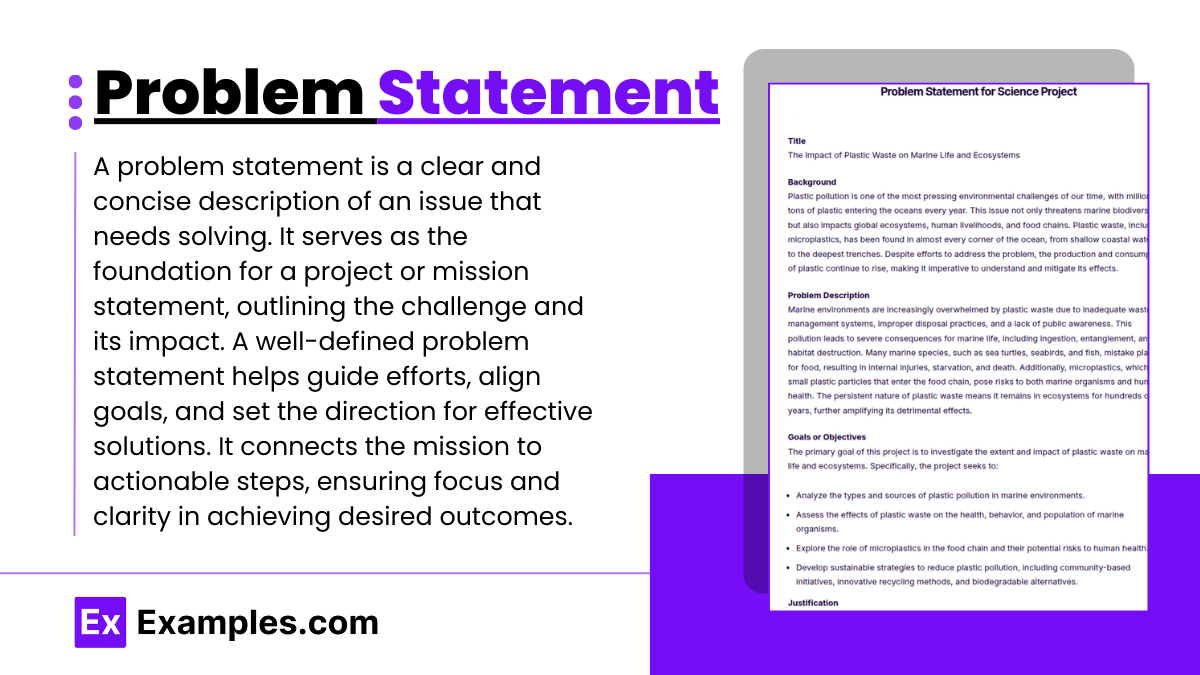20+ Problem Statement Examples to Download
A problem statement is a clear and concise description of an issue that needs solving. It serves as the foundation for a project or mission statement, outlining the challenge and its impact. A well-defined problem statement helps guide efforts, align goals, and set the direction for effective solutions. It connects the mission to actionable steps, ensuring focus and clarity in achieving desired outcomes.
What is Problem Statement?
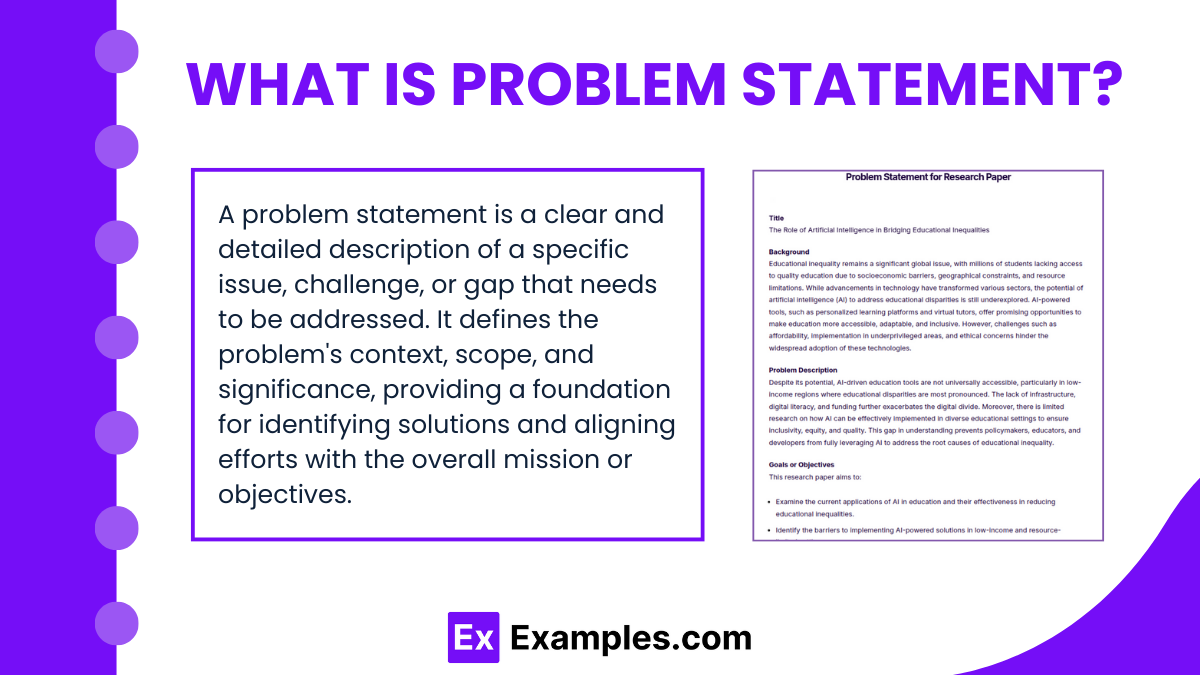
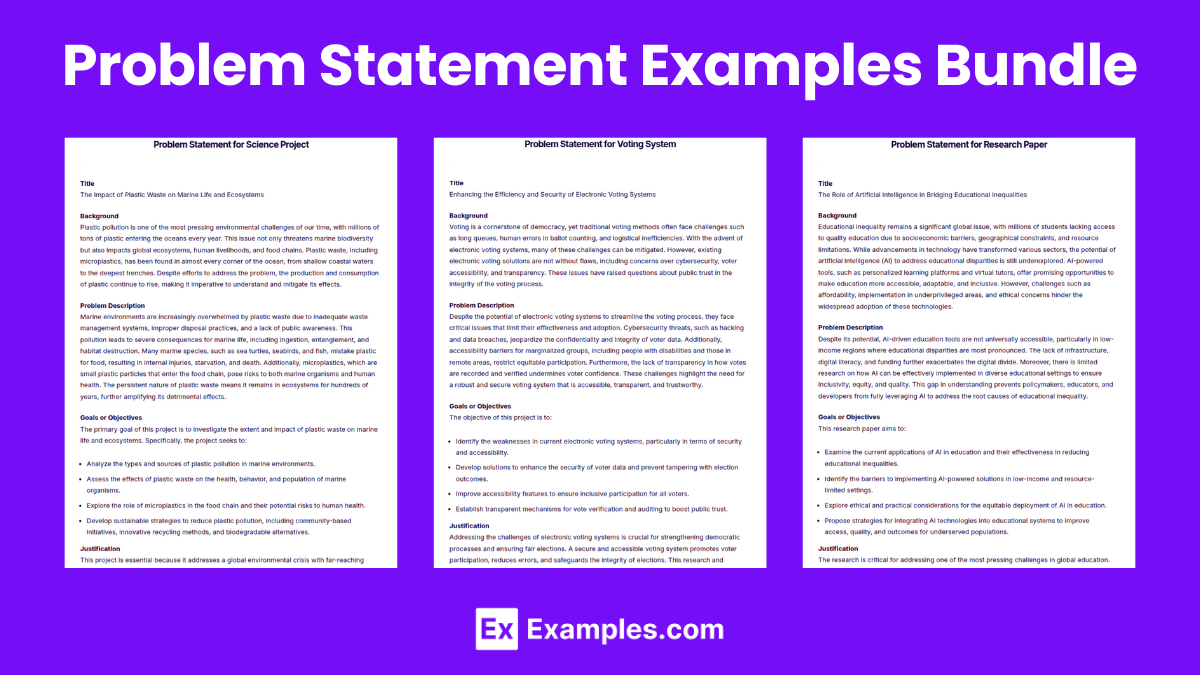
Problem Statement Examples Bundle
Problem Statement Format
Title
Provide a brief, descriptive title for the problem statement.
Background
Explain the context or background of the problem, including relevant details and its significance.
Problem Description
Clearly describe the issue or challenge, highlighting its impact and urgency.
Goals or Objectives
State the desired outcomes or objectives the problem aims to address.
Justification
Provide reasons why this problem needs to be solved, including potential benefits.
Problem Statement Example
Problem Statement Examples
Problem Statement for Science Project
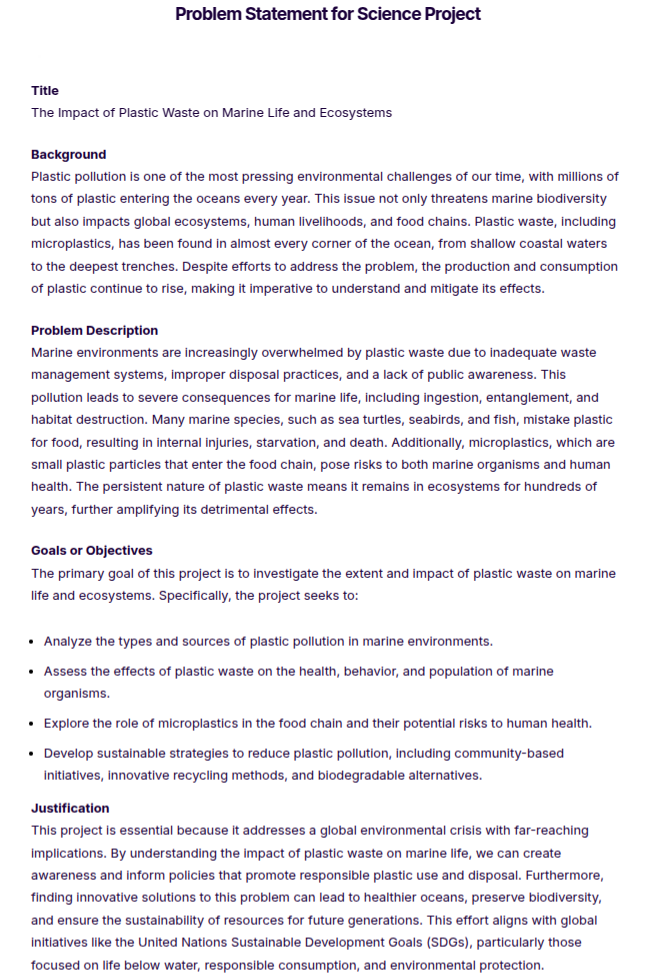
Problem Statement for Research Paper
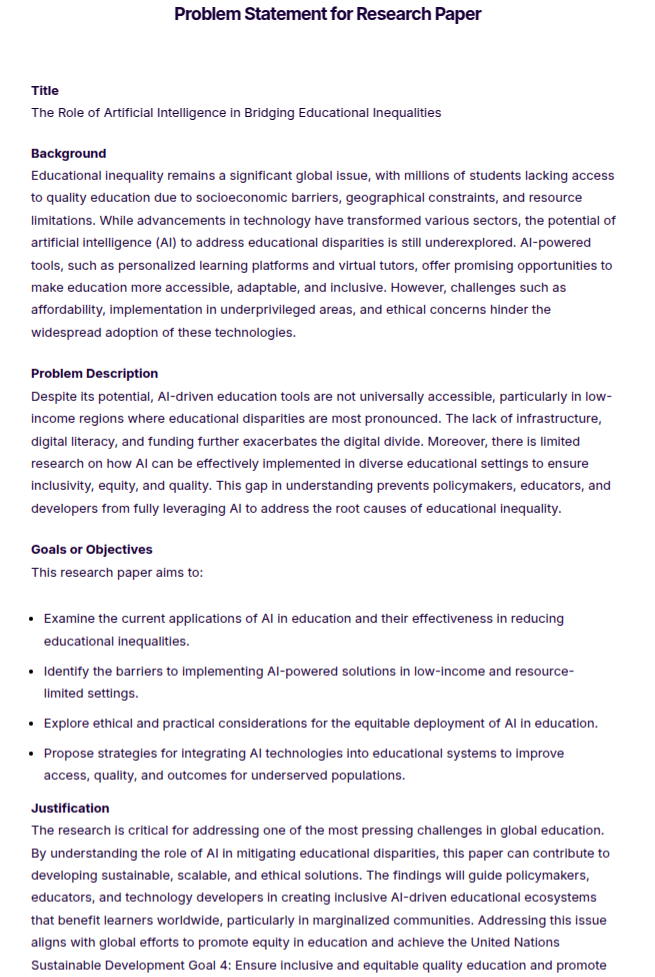
Problem Statement for Voting System
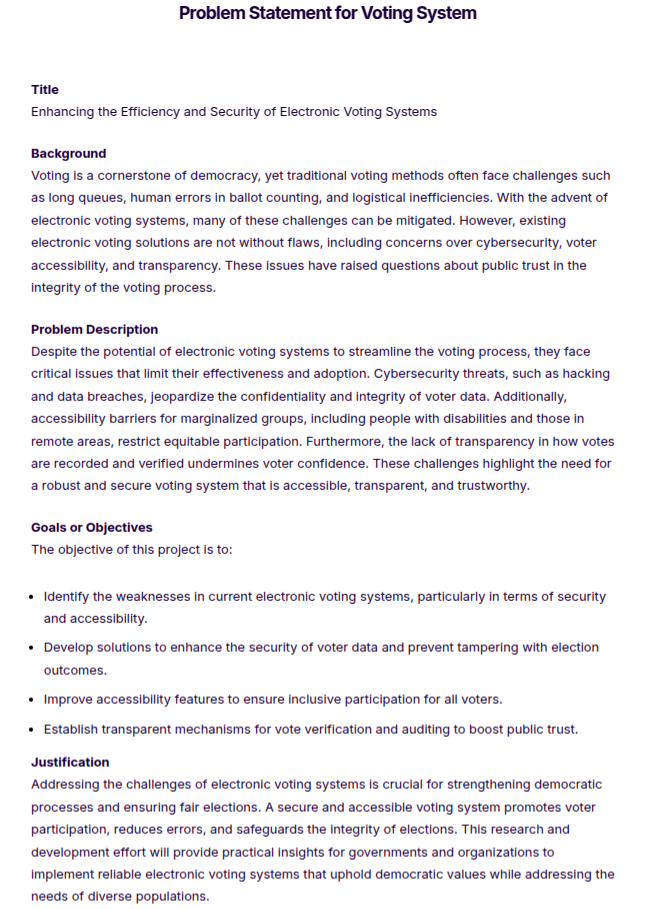
More Examples on Problem Statement
- Problem Statement for Project
- Problem Statement for Elephant toothpaste
- Problem Statement for Grant Proposal
- Problem Statement for Mental Health
- Problem Statement for Dissertation
- Problem Statement for Science Fair Project
- Problem Statement for Students
- Problem Statement in Business
- Problem Statement for Nursing
- Smart Problem Statement
- General Problem Statement
- Quantitative Problem Statement
Problem Statement Template
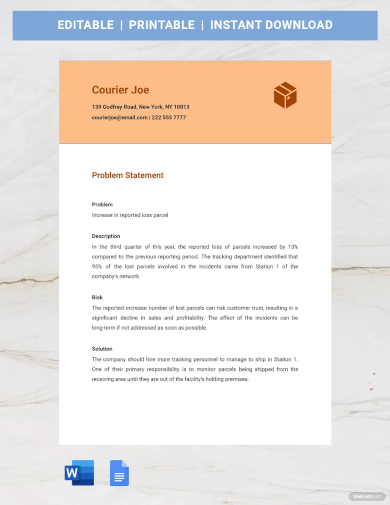
Research Problem Statement Template
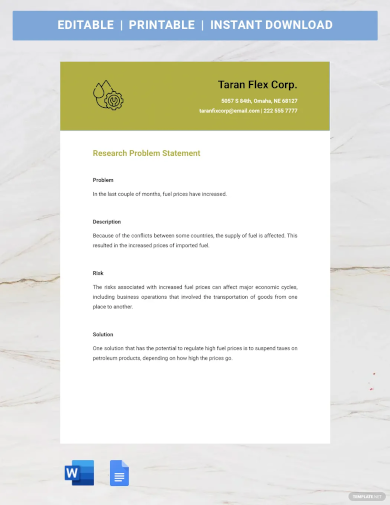
Project Problem Statement Template
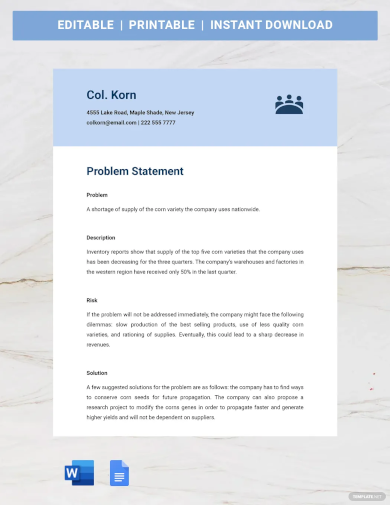
Product Problem Statement Template
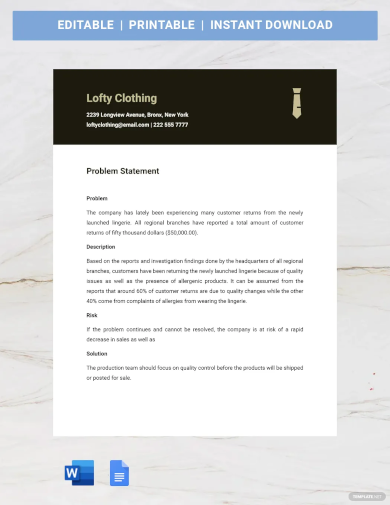
Project Problem Statement in PDF
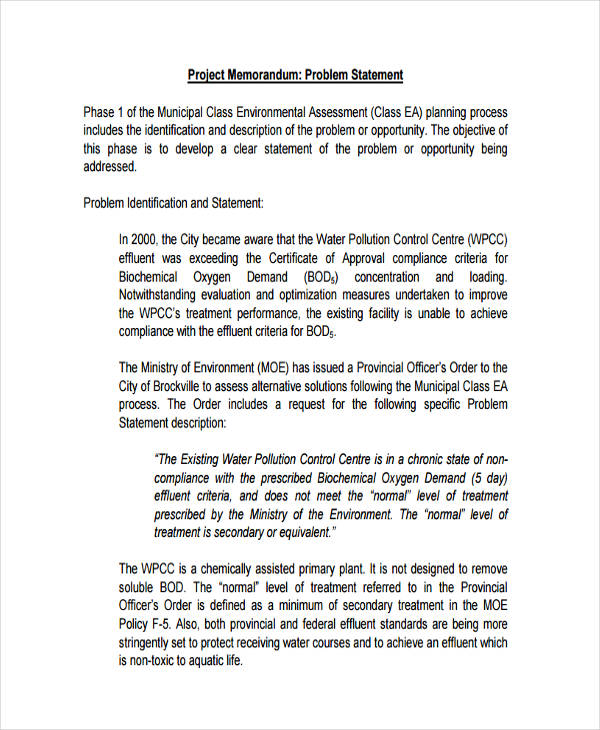
Management Problem
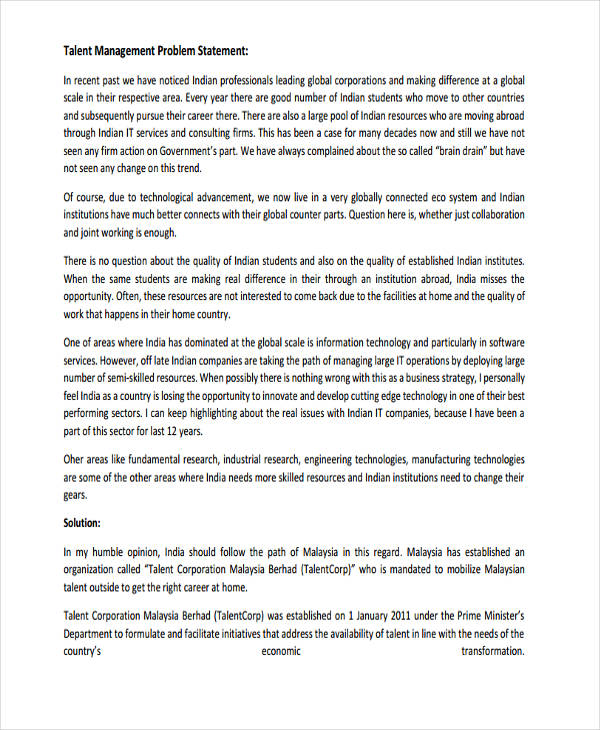
How to Write the Problem Statement
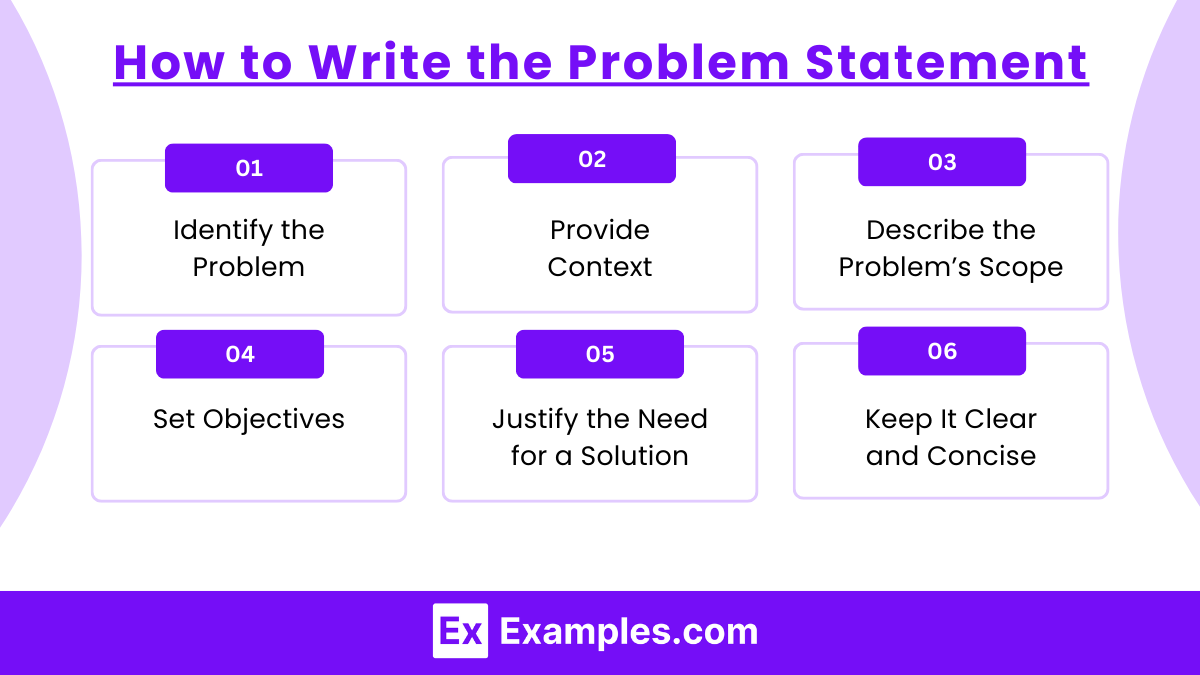
- Identify the Problem
Clearly define the specific issue or challenge that needs to be addressed. - Provide Context
Explain the background and significance of the problem, including relevant details and its impact. - Describe the Problem’s Scope
Highlight who is affected, the extent of the issue, and why it is urgent. - Set Objectives
Outline the goals or outcomes you aim to achieve by solving the problem. - Justify the Need for a Solution
Explain why the problem needs to be addressed and the potential benefits of resolving it. - Keep It Clear and Concise
Use straightforward language to ensure the problem statement is easy to understand.
When to Use a Problem Statement
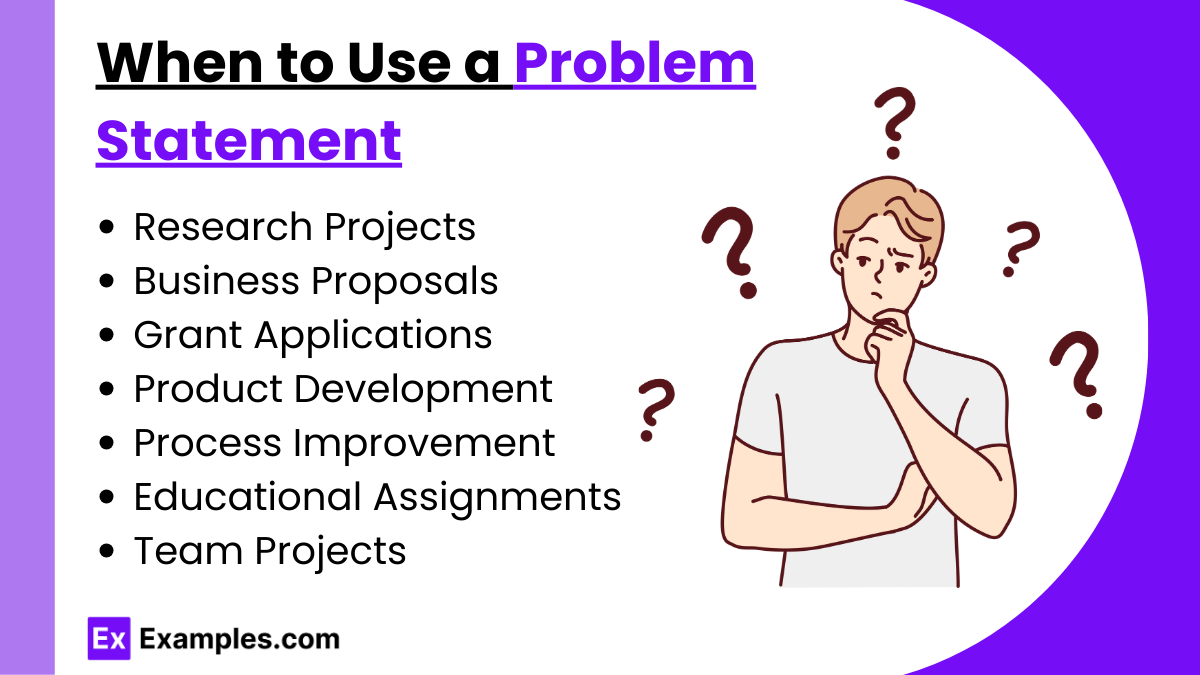
- Research Projects
To define the focus and scope of a study or investigation. - Business Proposals
To identify challenges and propose solutions in business plans or strategies. - Grant Applications
To articulate the need for funding by highlighting a specific issue and its significance. - Product Development
To outline a customer pain point that the product aims to address. - Process Improvement
To pinpoint inefficiencies or challenges in workflows and guide improvement efforts. - Educational Assignments
To provide a clear focus for projects, case studies, or problem-based learning activities. - Team Projects
To align group efforts by defining a shared problem to solve.
FAQs
Why is a problem statement important?
It defines the issue, aligns stakeholders, guides objectives, and ensures focused efforts to solve the problem effectively.
How do you write a problem statement?
Identify the problem, provide context, describe its scope, set objectives, justify the need, and ensure clarity and conciseness.
Where is a problem statement used?
It is used in research, business proposals, grant applications, product development, process improvements, and educational projects.
What are the key elements of a problem statement?
Key elements include the title, background, problem description, objectives, and justification for addressing the issue.
What is an example of a problem statement?
Example: “High employee turnover affects productivity; addressing it through training and engagement strategies can improve retention and efficiency.”


